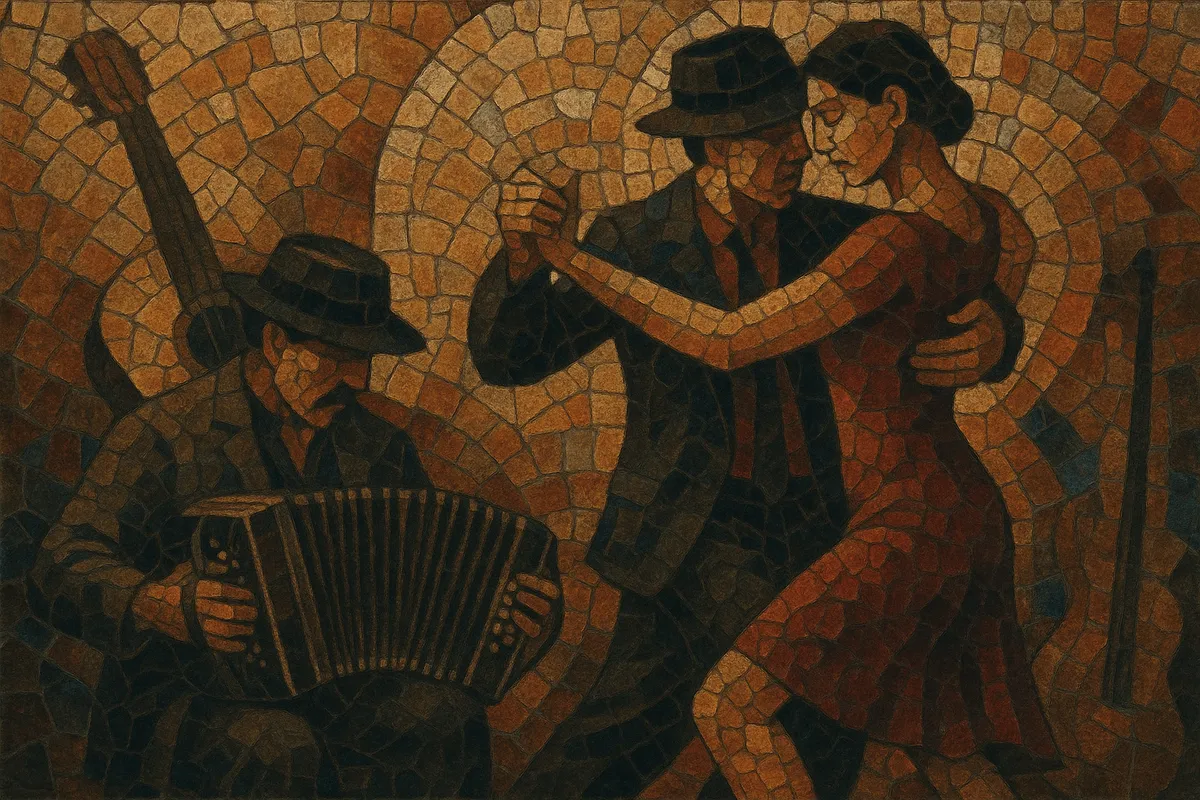Milonga is a song and dance music from the Río de la Plata region that predates and helped shape tango. It typically features a brisk duple meter (2/4 or 4/4), a syncopated habanera-derived groove, and guitar-led accompaniments supporting strophic, narrative singing.
Two principal currents are often distinguished. Milonga campera (or milonga pampeana) is the rural, guitar-and-voice style associated with gaucho payadas and poetic décimas, reflective in tone and rooted in the Argentine pampas and Uruguay. Milonga ciudadana is the more urban, dance-oriented style that entered salon and orchestra repertoires in Buenos Aires and Montevideo, moving faster than tango and favoring sharper rhythmic articulation.
Harmonically, milonga tends to be straightforward (I–IV–V and Andalusian-type cadences in minor), yet expressive, and its lyrics alternate between romance, social portraiture, and nostalgia for rural life.
Milonga emerged in the late 19th century in the Río de la Plata, becoming both a rural song form and an urban dance music. It served as a crucial bridge between Afro-Rioplatense rhythms, Cuban habanera patterns, and European popular dance forms, ultimately contributing heavily to the birth of tango.
The genre coalesced in the 1870s within the cultural mix of Buenos Aires, Montevideo, and the surrounding pampas. Its rhythmic backbone draws from the Cuban habanera and local Afro-Uruguayan/Argentine candombe traditions, while its performance practice reflects gaucho song (payada) and guitar-strumming idioms. European couple dances such as the polka and mazurka colored accompaniment patterns and social usage.
As milonga entered urban salons, it adapted to ensembles beyond solo guitar—incorporating bandoneón, piano, violin, and double bass. In this city environment, milonga became faster and sharper than tango, yet the two styles cross-pollinated; the urban milonga’s rhythmic clarity and phrasing fed directly into the formative vocabulary of tango. Composers like Sebastián Piana formalized milonga as a sophisticated song type (e.g., "Milonga sentimental"), cementing it in the popular repertoire.
Throughout the 20th century, singers and guitarists from both Argentina and Uruguay—Atahualpa Yupanqui, Alfredo Zitarrosa, Edmundo Rivero, Eduardo Falú, and others—made milonga a cornerstone of Rioplatense song. Carlos Gardel recorded milongas alongside tangos, further circulating the style internationally. Folklore movements of the mid-century integrated milonga campera into festivals and recordings, while tango orquesta leaders kept dance-oriented milongas in circulation.
Today, milonga survives as a distinct folk-poetic form and as a dance style within tango scenes (including milonga lisa and milonga traspie). It also informs modern tango-fusion and electrotango, with the characteristic 2/4 syncopation and guitar/bandoneón idioms adapted to new production contexts.


